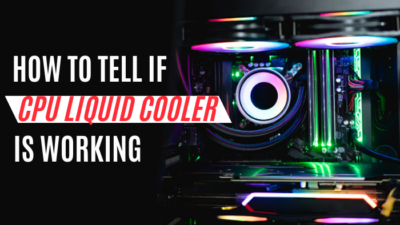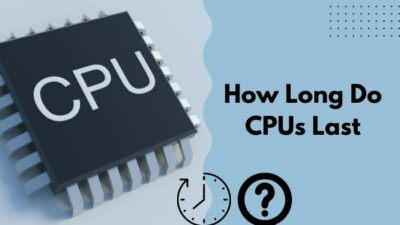The central nervous system of a computer is another way to describe a processor. It manages all the commands and calculations required to run programs and complete tasks.
To ensure processors function correctly and prevent damage, a user must handle them carefully.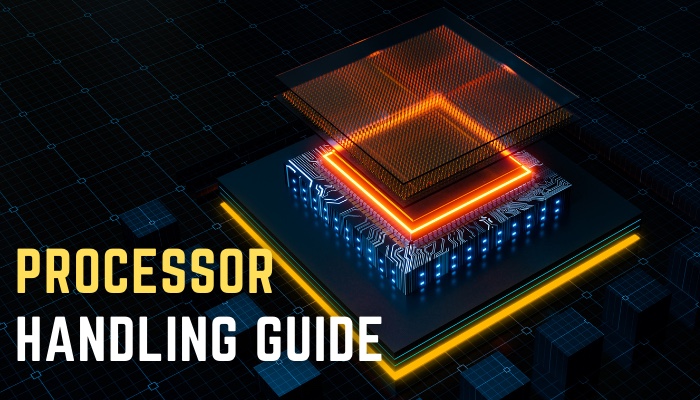
I will therefore discuss the processor handling guide in this article to assist you in taking care of your processor.
Let’s get started.
What is a Processor & How Does it Work?
A processor has carried out the command that lets applications operate and process different tasks. The more capable and up-to-date your microprocessor, the quicker your computer can accomplish its activities and unfinished process.
A processor is a small chip that serves as the computer or electrical device’s central nervous system.
It is responsible for calculations and commands that enable applications to run. A microprocessor comprises millions of tiny transistors that collaborate to handle data.
A processor functions by receiving, interpreting, and transmitting the information. A program initiates the procedure by sending a signal to the processor. The CPU then retrieves the memory location of the instruction.
The processor then decodes the instruction. Then the processor identifies what action it should take.
Finally, the processor performs the required action and saves the outcome in memory to implement the command.
What is the Proper Way to Handle a CPU?
To properly handle a processor, avoid touching its pins, never maintain it unless suitable anti-static precautions, and manage the CPU using only its sides. Users should also wear an anti-static wristband and use the proper equipment when adding or dismantling a processor.
To correctly handle their processor, users can take some safety precautions. Simply follow the instructions in the piece below to find out.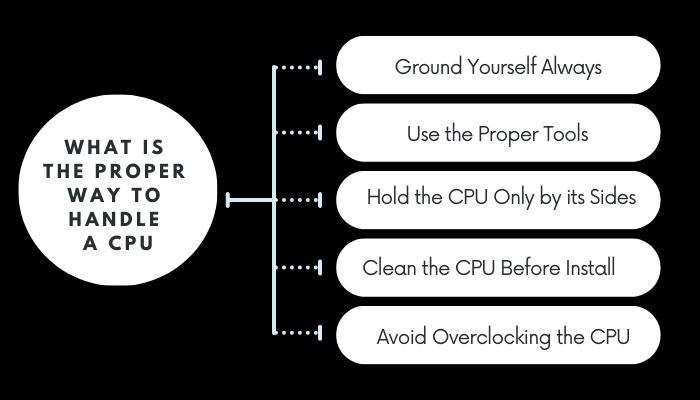
Here are some safety precautions to take when using the processor:
1. Ground Yourself Always
Static energy has the potential to harm computer parts, including the processor. As a result, ground yourself before managing the processor.
You may accomplish this by contacting a conductive metal item or having an anti-static hand strap. This wristband or conductive wire will release any electrical currents and reduce the danger.
2. Use the Proper Tools
To add or uninstall a processor, you’ll need the appropriate equipment. These consist of a screwdriver, a CPU mounting instrument, and a thermal paste.
To protect the screws and CPU slot, use the proper size screwdriver. Remove the CPU from the mount using the processor socket tool. Users must be careful not to bend any of the wires.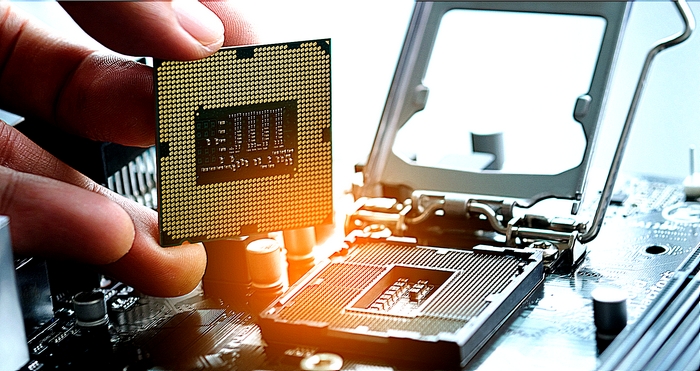
3. Hold the CPU Only by its Sides
When handling the processor, keep your hands away from the wires and the outside of the CPU. To avoid damaging the pins or the area, only grasp the CPU by the sides.
Furthermore, you should avoid applying weight to the pins can lead them to flex or break.
4. Clean the CPU Before Install
This cleaning process guarantees the microprocessor and port have clean and safe communication.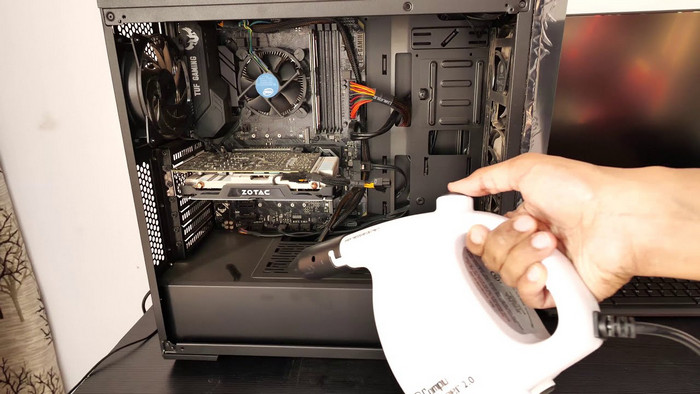
5. Avoid Overclocking the CPU
Overclocking the CPU means running it at a faster velocity than the company’s suggested speed.
While this can improve computer speed, the overclocking can damage your CPU and reduce its lifetime.
Consequently, stay away from overclocking the processor unless you have experience.
What Causes Processor Damage?
The primary causes of processor damage are insufficient air flow, dust on the CPU cooler, and overclocking the processor. Other factors that cause processor damage include physical harm, electrical overload in the CPU, and static electricity.
There are additional causes for processor harm. Simply read the part below to learn more.
The following are the reasons for CPU damage:
Overheating
Excessive heat is among the most prevalent reason for processor damage. A processor heats up when it’s in function, and if it becomes too warm, it can cause harm to the CPU or other parts of the computer system.
Overheating CPUs can cause blue screens and other issues that can contribute to processor damage.
Overheating can cause by several factors, including inadequate cooling, a faulty fan, or exceeding the processor’s rated capacity.
Power Surges
Power surges can appear when the electrical charge passing through a circuit suddenly increases.
These surges can harm computer parts, such as the processor. Lightning strikes, blackouts, and other electrical disruptions may result in power surges.
Physical Damage
The processor may malfunction or stop working entirely if the motherboard or CPU sustains physical damage.
This harm can result from improper installation handling, unintentional drops, moisture, or other liquid contacts. . Any bent pins can make your CPU bad, and it may not operate at all.
Electrical Overload
Electrical overload happens when an excessive amount of current passing through circuitry. This electrical overload could lead to the CPU or other parts of a computer system malfunctioning or failing.
Electrical overflow can cause by defective electrical cabling, inappropriate power sources, or overflowing surge suppressors or surge protectors.
Static Electricity
Static electricity can accumulate in the body and discharge when it comes into touch with a PC component like a processor.
This static electricity can damage the processor, especially if the emission is powerful enough. You can use an anti-static wristband when operating on computer parts to reduce static discharge from the PC parts.
How to Prevent Processor Damage
To prevent processor damage, users should avoid overheating their processors, keep their systems cool, and use a high-quality power supply. Antivirus software uses and taking excellent care of the entire system can also help users avoid CPU damage.
There are other steps a user should take to prevent processor damage. Just follow the section below to find it out.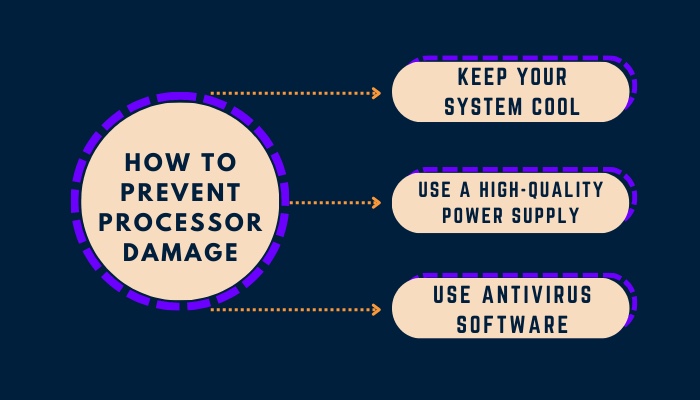
Here are some methods for avoiding CPU damage:
1. Keep Your System Cool
When CPUs are in use, they can create heat, which can cause significant damage if not correctly managed. Your computer must have sufficient ventilation to disperse this heat.
You can accomplish this sufficient ventilation by cleaning the air duct and fans frequently to clear any particles and dirt that may obstruct airflow. And if you don’t have one, you should buy immediately because the CPU cooler is necessary for your PC.
2. Use a High-Quality Power Supply
A high-quality power source is needed for your processor to operate correctly. Obstruct the passage of air.
A low-quality power source can cause voltage disturbances. That disturbance can eventually damage the CPU.
3. Use Antivirus Software
Malicious software can seriously harm your microprocessor by corrupting critical system files or stealing private data.
Antivirus software is required to safeguard your device from these threats. Maintain the program up-to-date to ensure it can identify the most recent threats.
Conclusion
Computer processors are vital parts, so it’s essential to handle them carefully. You can make sure that your processor functions correctly and prevent damage by adhering to the handling guide for processors discussed above.
You can guarantee peak performance and increase the lifespan of your processor by doing these methods.
If you have any suggestions, please leave them in the comments area below.


